The Varangian Guard was known for its intense loyalty to the Byzantine Emperor, but how did this look during period of turmoil & successive rebellions?
Let’s examine the exploits of the Varangians from 1071-1081 & their role in this pivotal decade of Byzantine history.
Let’s examine the exploits of the Varangians from 1071-1081 & their role in this pivotal decade of Byzantine history.
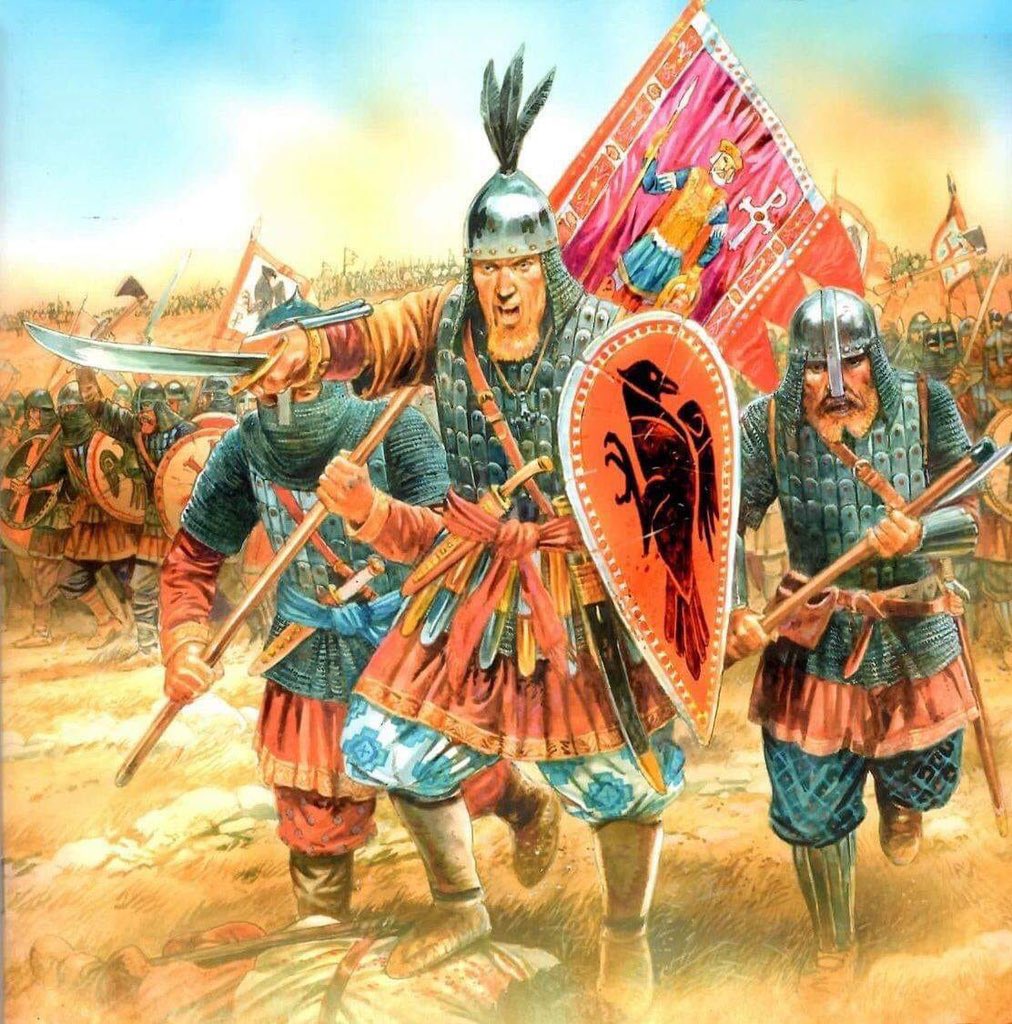
This chaotic decade began with the Byzantine defeat at Manzikert. Although light on casualties, the capture of Romanos set in motion a scramble for the throne. The Doukids, pushed aside by the charismatic general, were the first to stake a claim, Michael VII reasserting himself. 
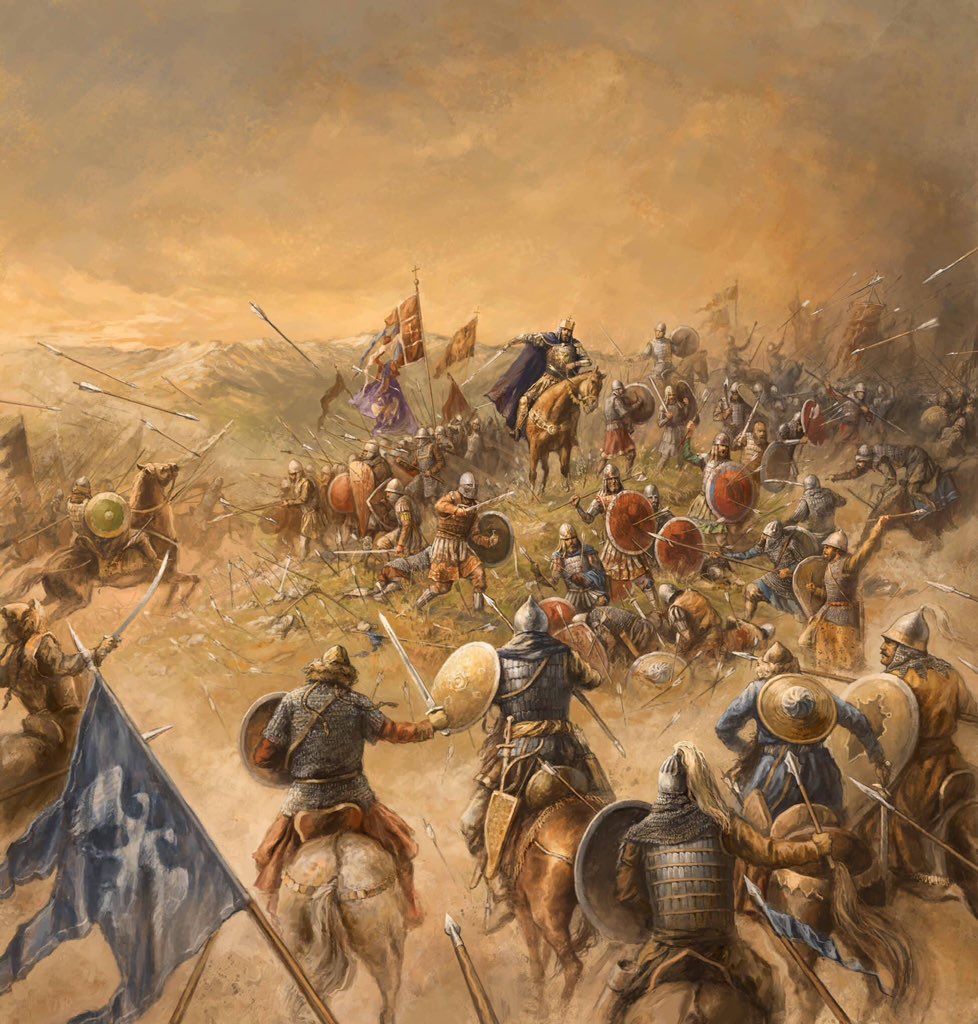
At Michael VII’s ascension the Varangians “beat their shields & roared as loudly as they could,” according to Michael Psellos. The legalistic Palace Varangians were happy to see the “rightful” dynasty back in power, but this satisfaction would not last long. 

Even though the Varangians were mauled badly at Manzikert, there was still a considerable number of men in the regiment who had been stationed in forts & garrisons across the Empire. These men were of such number they formed the professional backbone of most Byzantine armies. 

At the Battle of Zombos Bridge in 1074, less than 3 years after Manzikert, 1,500 Varangians could be sent with the field army, proving their elevated importance in a diminished Byzantium. More importantly, they performed well in battle, and never turned traitor as the Normans.
https://twitter.com/varangian_tagma/status/1495774384732184580
Although the Varangians never went rogue like the Normans, they weren’t impassive to Byzantine decline. As mercenaries, pay was owed & Michael VII could not deliver. The Provincial Varangians, serving in the field armies, were more often without pay compared to the Palace Guard. 
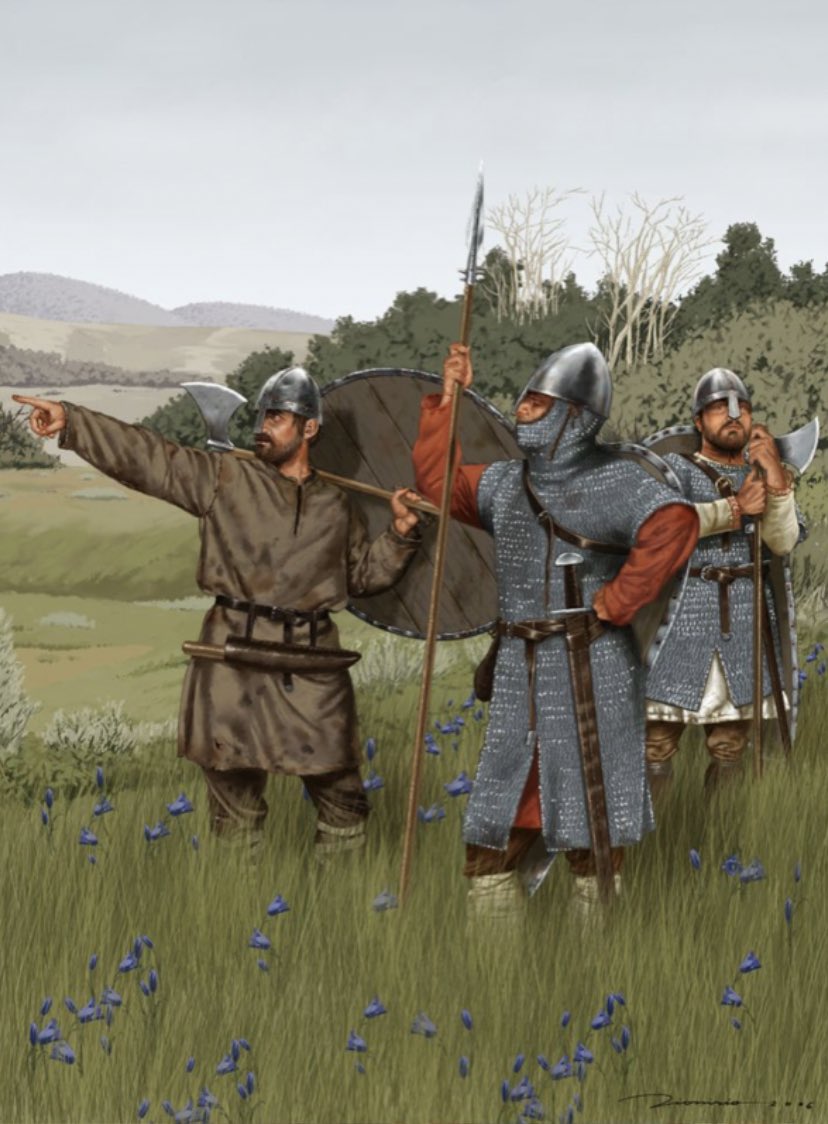
Such men also served under charismatic and, in Byzantine fashion, rebellious generals. These men shared the hardships of war & campaigns with the Varangians, visiting them at their campfires & stirring them in the heat of battle. 
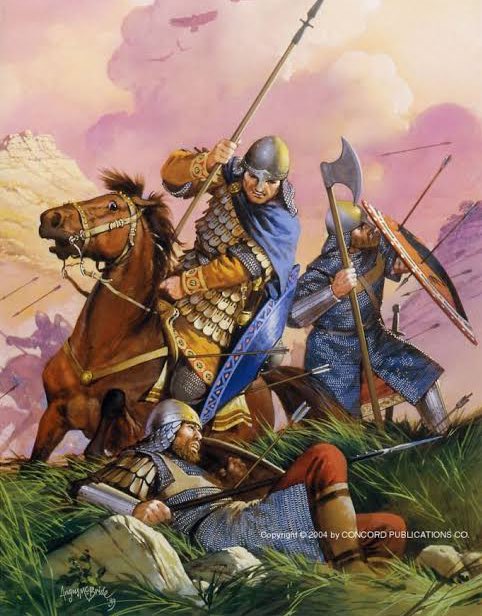
It is also possible that these Varangians hoped that their support for their general would confer great status to them after his victory. Demonstrations of loyalty & victory on the battlefield could mean rich rewards & lucrative positions in the Palace Varangians. 
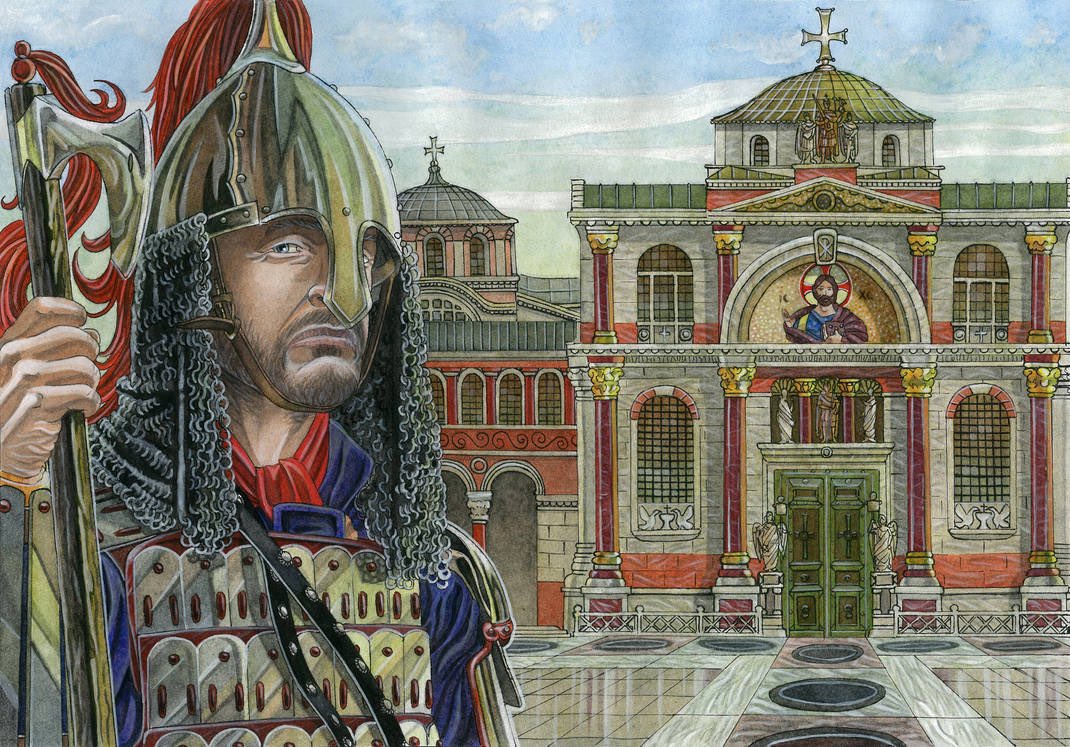
When these generals told the Varangians they wished to replace a dastardly Emperor, the Varangians often supported them in this ambition. So it was with the rebellion of Nikephoros Bryennius in 1077. Attaleiates states Bryennios’s army was strong in “Franks & Varangians.” 
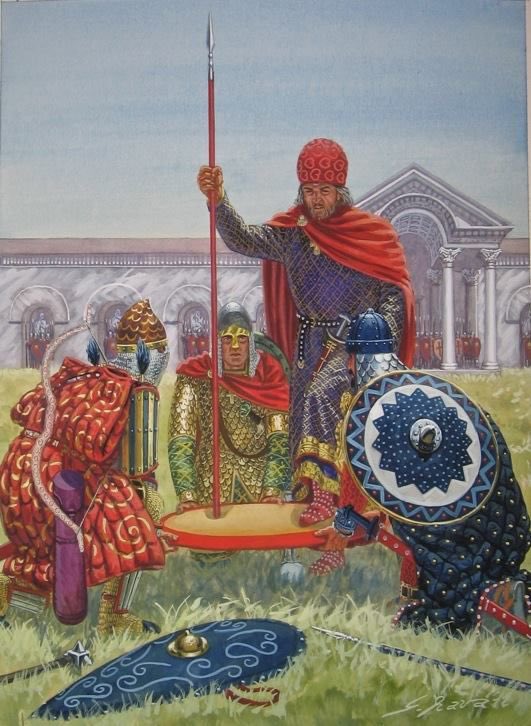
Alarmed by the participation of their brothers in this rebellion, the Varangians of the City dispatched an emissary to Adrianople to try and persuade the Varangians in Nikephoros’s army to return to the service of the emperor. 
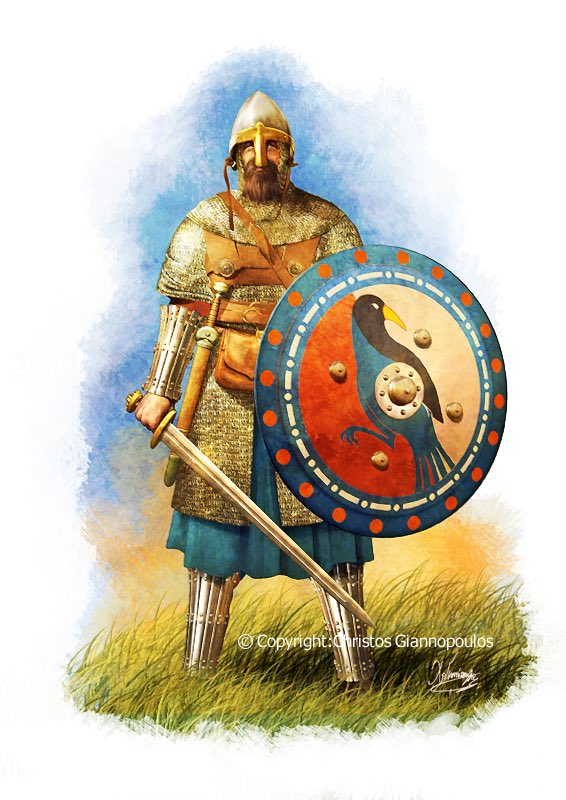
The emissary, in typical Varangian fashion, drunkenly boasted of his mission in a tavern & was apprehended by Nikephoros’s men. After being tortured & forced to confess he was sent to assassinate Nikephoros, his nose was cut off & he was sent back to Constantinople as a warning. 
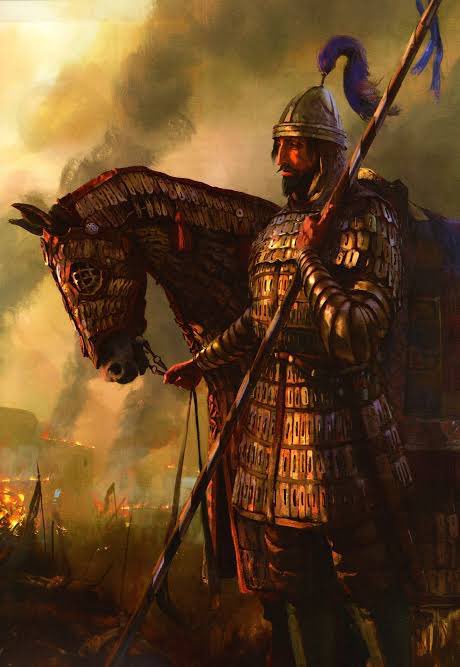
With new urgency, Byrennius pillaged the suburbs of Constantinople, galvanizing opposition to his rebellion. Byrennius stationed his army in the port of Athyras, 14 miles west of Constantinople. The Emperor assembled a force under Alexios Komnenos & Roussel de Bailleul to attack. 

This attack relied heavily on the Varangian Guard, especially Russian Varangians, who may have entered the Guard in larger numbers during this turbulent period. The Varangians were to attack Athyras by sea & the rest of the army by land, trapping Byrennius & crushing his army. 
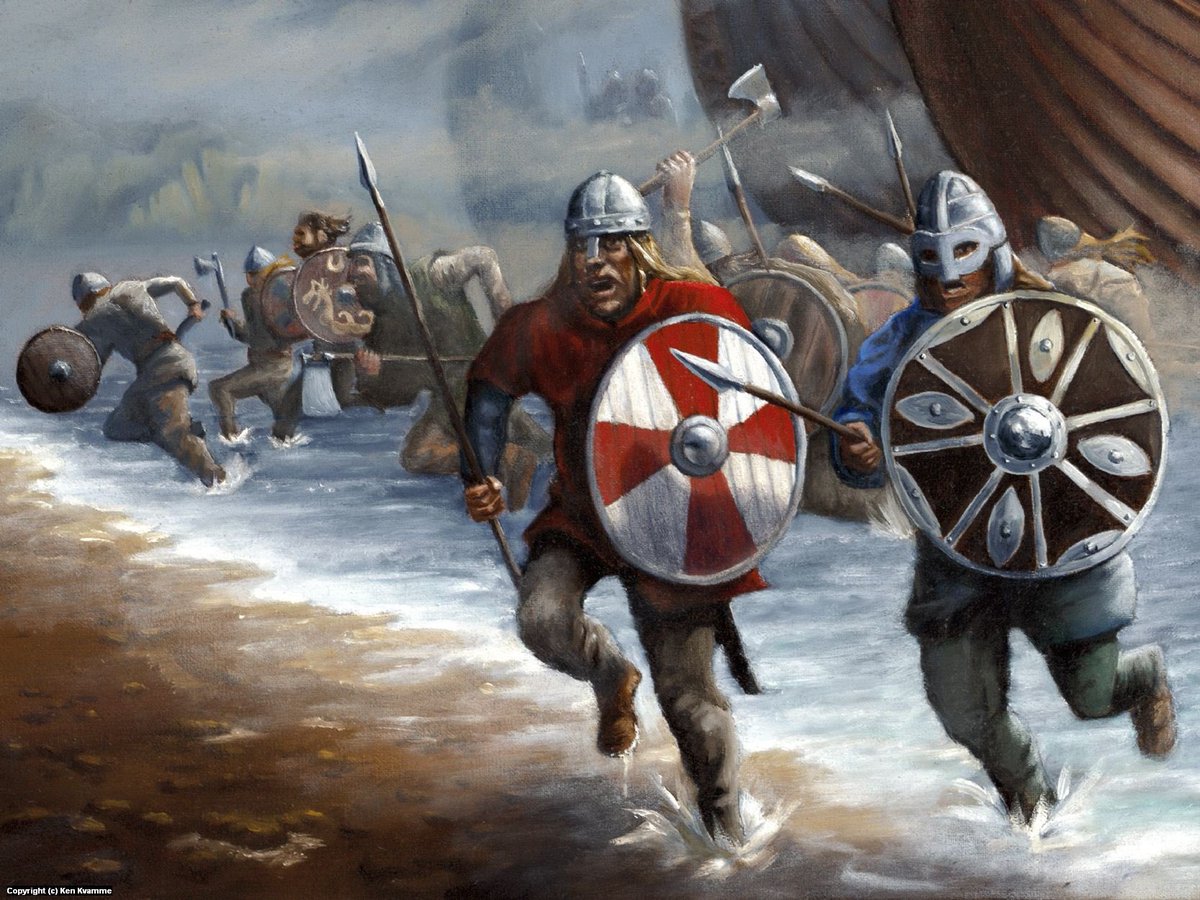
However, this coordinated attack broke down when the army under Alexios & Roussel was delayed, having to fight Macedonian regiments of Byrennius’s army on the road to Athyras. The Varangian ships attack the harbor at dawn, as planned. 
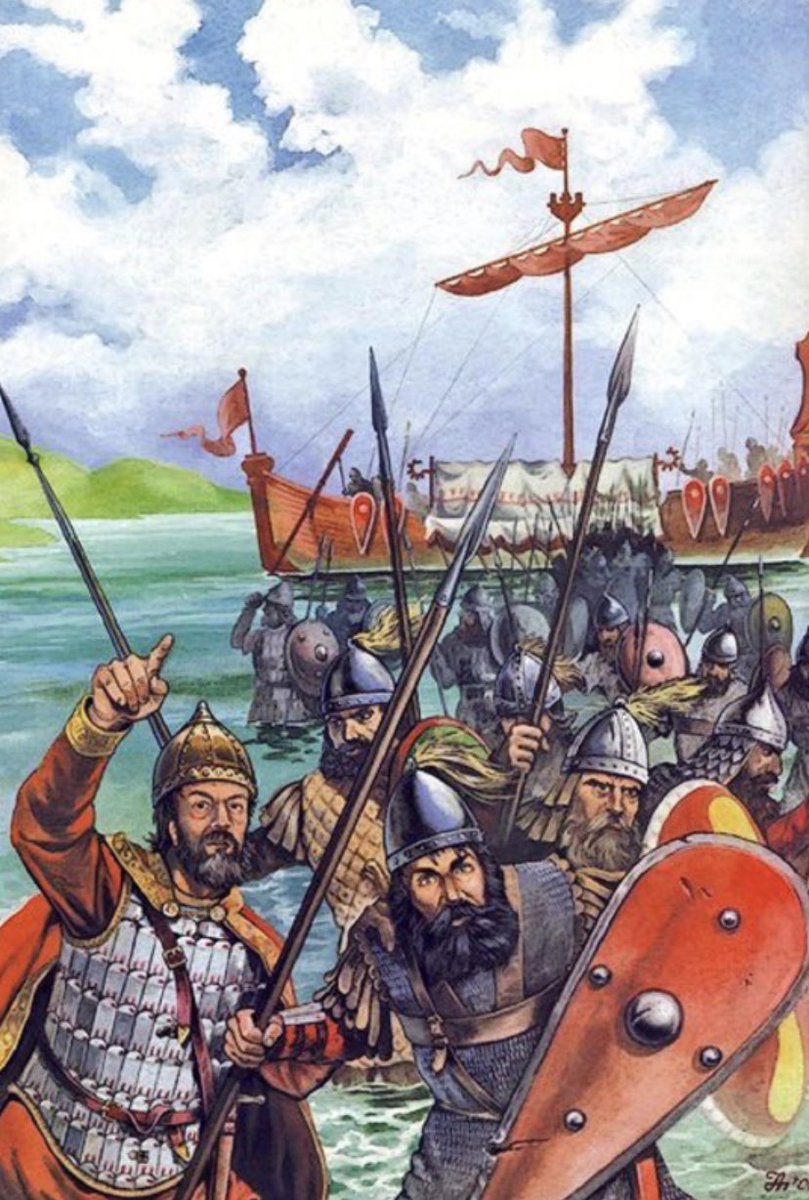
The Varangians met little resistance to their attack, opening the gates to the town quickly. The Varangians then quickly dispatched the soldiers in the citadel, capturing Byrennius’s ceremonial chariot & banner. However, Byrennius escaped before the landward army could trap them. 
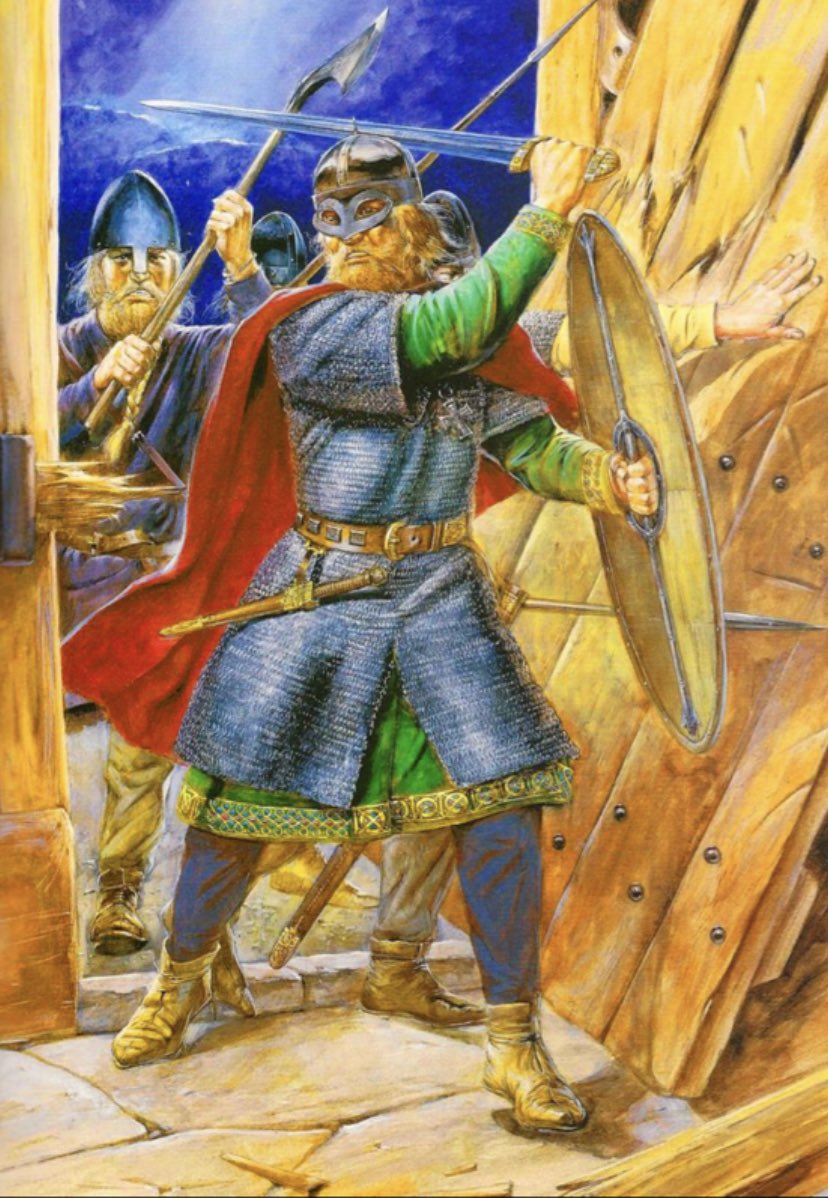
When Botaneiates stormed Constantinople soon after, Alexios Komnenos urged Michael VII to quell the unrest with the Varangians, trusting them alone to remain faithful. Michael abdicated. Botaneiates then sent Alexios Komnenos to finish off Byrennius, defeating him at Kalovryta. 

Byrennius & his brother were blinded, but otherwise treated well. In desperate need of soldiers, it is suspected the rebellious Varangians in Byrennius’s army were readmitted to the regiment. However, reconciliation after years of fighting must have been difficult. 
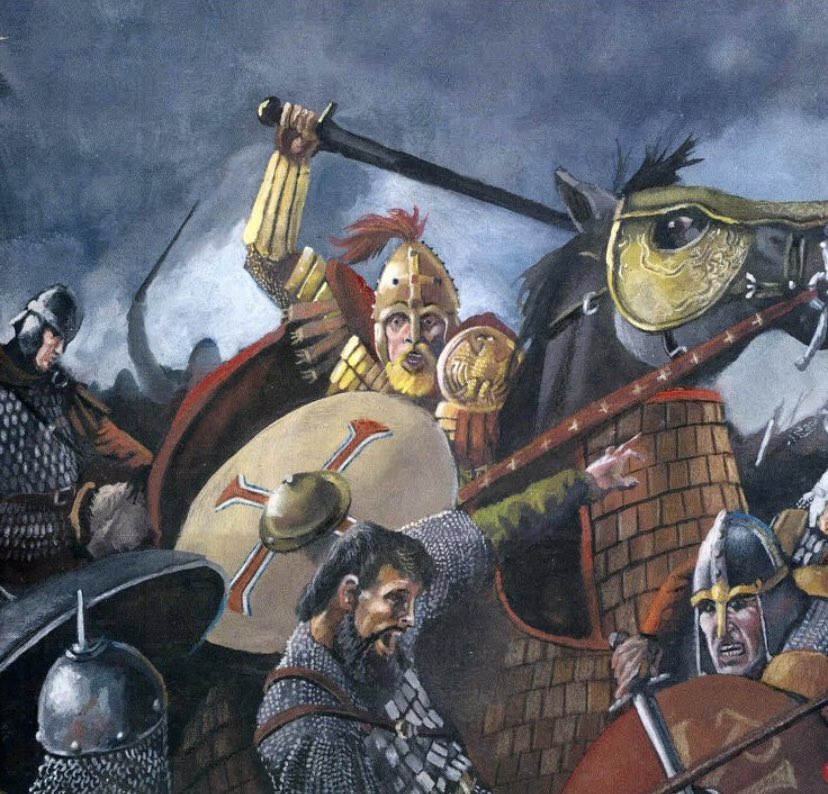
This bad blood was brought to a boiling point when the blinded, but rehabilitated, Byrennius left a meeting at the palace. The Varangian whose nose he ordered cut off recognized him & killed him with a single blow of his axe. 
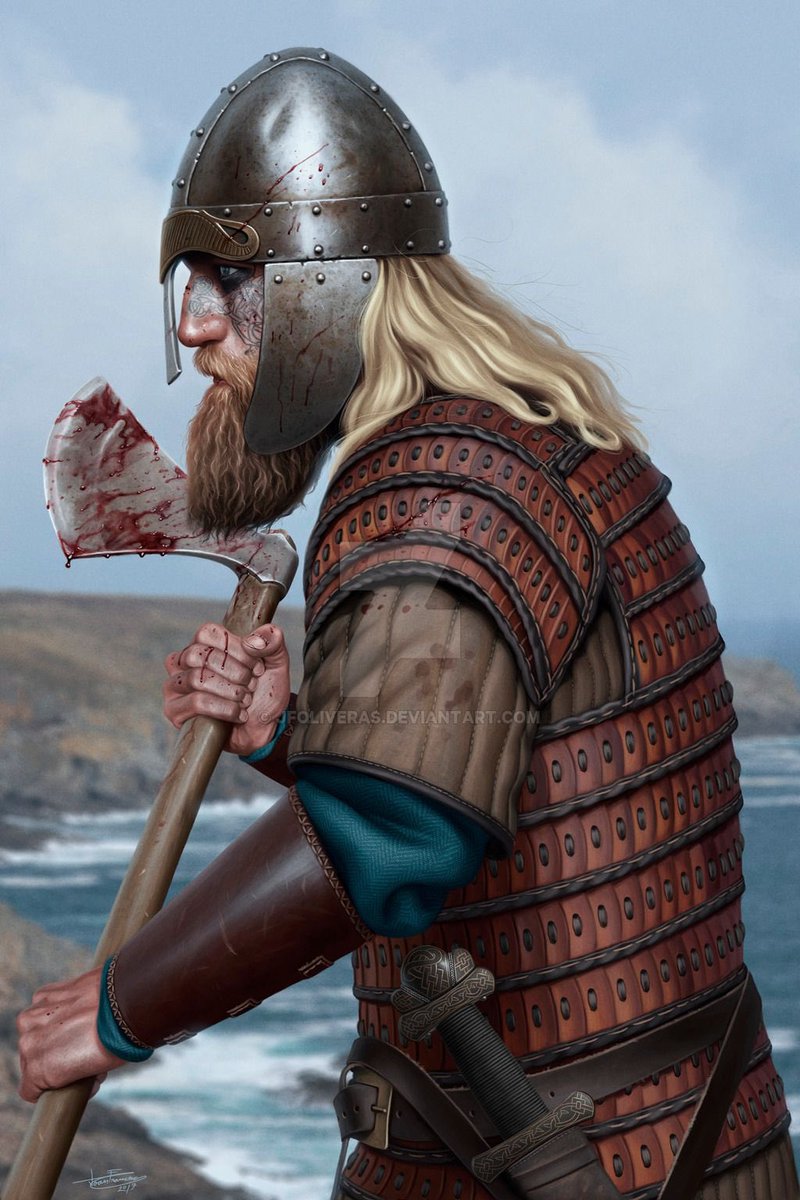
The vengeful Varangian was probably killed on the spot by the other guardsmen, executed at the Emperor’s order, or condemned to death by the judicial system of the Varangian Guard which upheld their standards of honor & strict code. This execution still upset the Guard. 
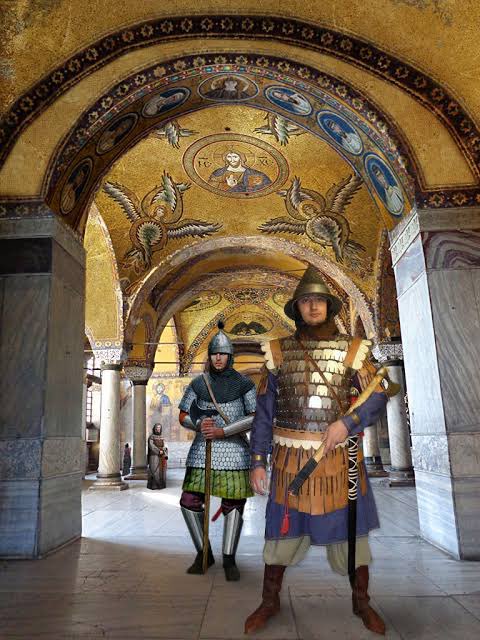
Their brother had been mutilated as an emissary & when he took personal revenge against the rebel, a celebrated part of Norse ethos, he was killed. One night, a few drunken Varangians attacked Botaneiates while we relaxed on the balcony of his apartments. 
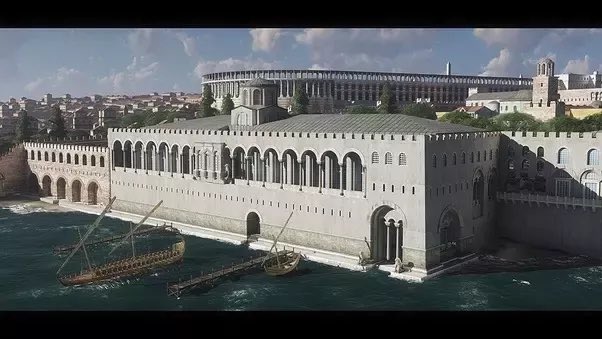
The men shot arrows, hitting a secretary in the neck & killing him. The Emperor was a seasoned warrior & with the few men at his disposal, prevented the drunks from capturing him, engaging in a fierce brawl on the stairs that lead up to his rooms. 
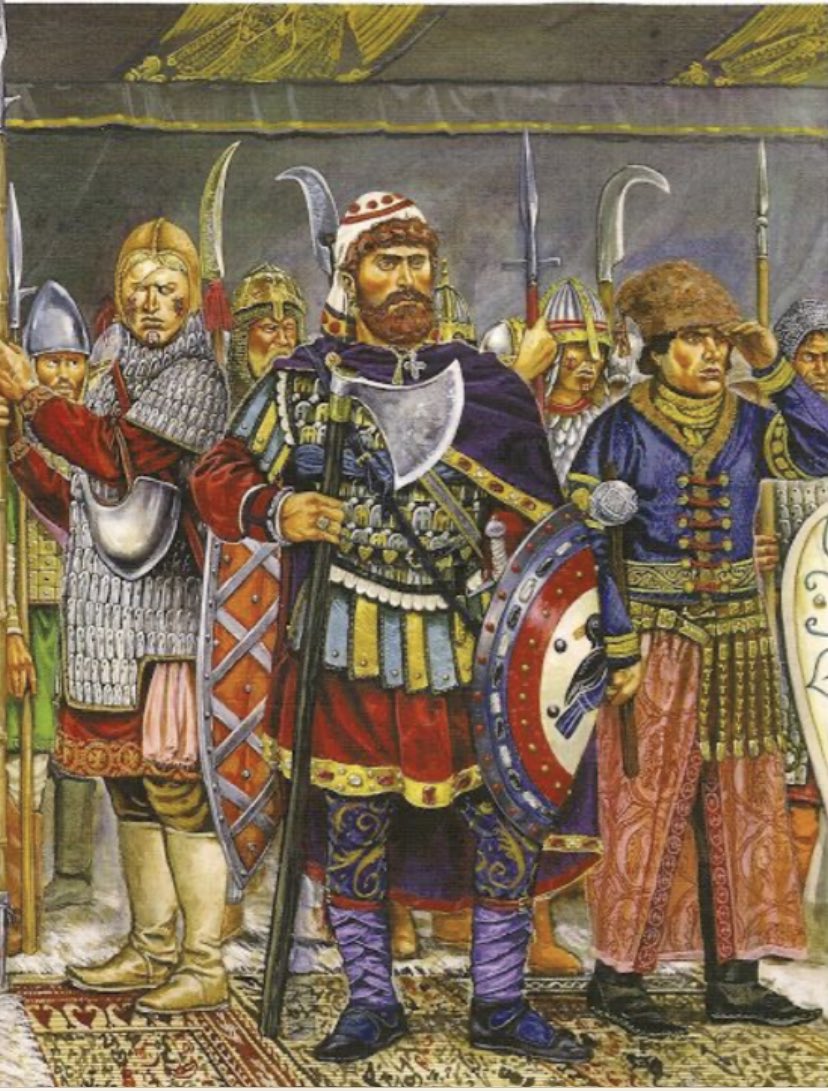
Soon the Numera, another, Greek, regiment of the Palace Guard, drove the Varangians to their guardroom where they surrendered. The Emperor, a forgiving & pragmatic man, didn’t punish the whole Guard for this isolated incident, perpetrated by the friends of the noseless Varangian. 
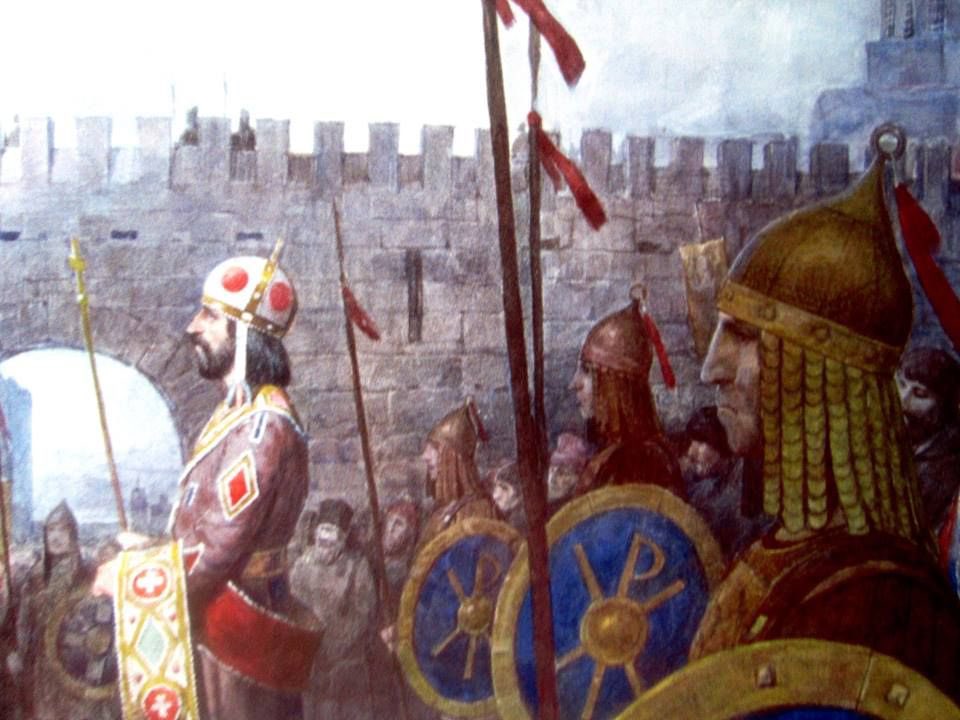
The Emperor deferred to the Varangian Court (perhaps he had not before, which caused this outburst?). Most of the men were pardoned after accepting their fault, the leaders of the riot were sent to distant garrisons, losing their coveted privileges in the Palace Guard. 
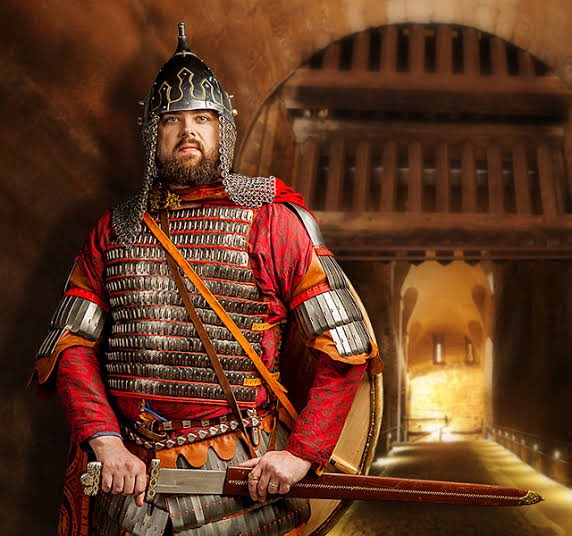
Despite this rare outburst, the loyalty of the Varangians to their Emperor remained firm. When Alexios Komnenos rebelled & besieged Constantinople in March 1081, John Dukas advised he bribe the German mercenaries to open the gates since the Varangians had “unswerving loyalty.” 
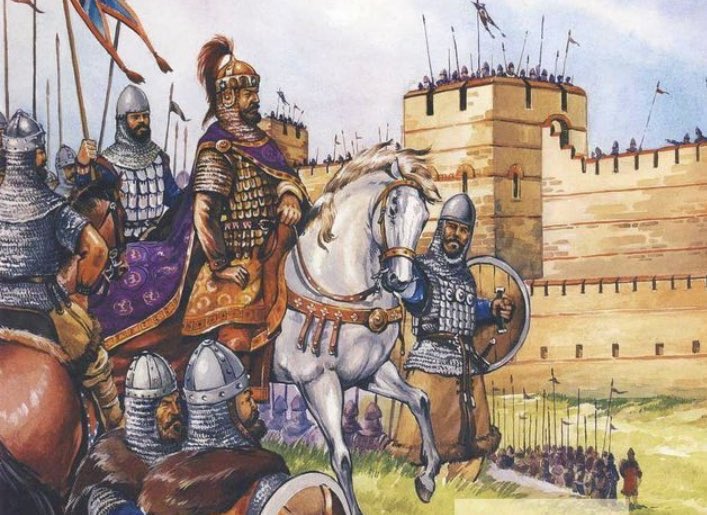
These Germans accepted the bribe & Alexios’s men rampaged through the City. All the defenders deserted Botaneiates except the Varangians & some Cumans who set up a defensive perimeter around the palace quarter, standing “ready for battle, shield to shield, without budging.” 

Botaneiates, heeding the pleas of Patriarch Cosmos to avoid another bloody civil war, abdicated, & became a monk. Alexios, ever-respectful of the loyal Varangians, would rely on them in almost every campaign of his desperate & brilliant rule. 
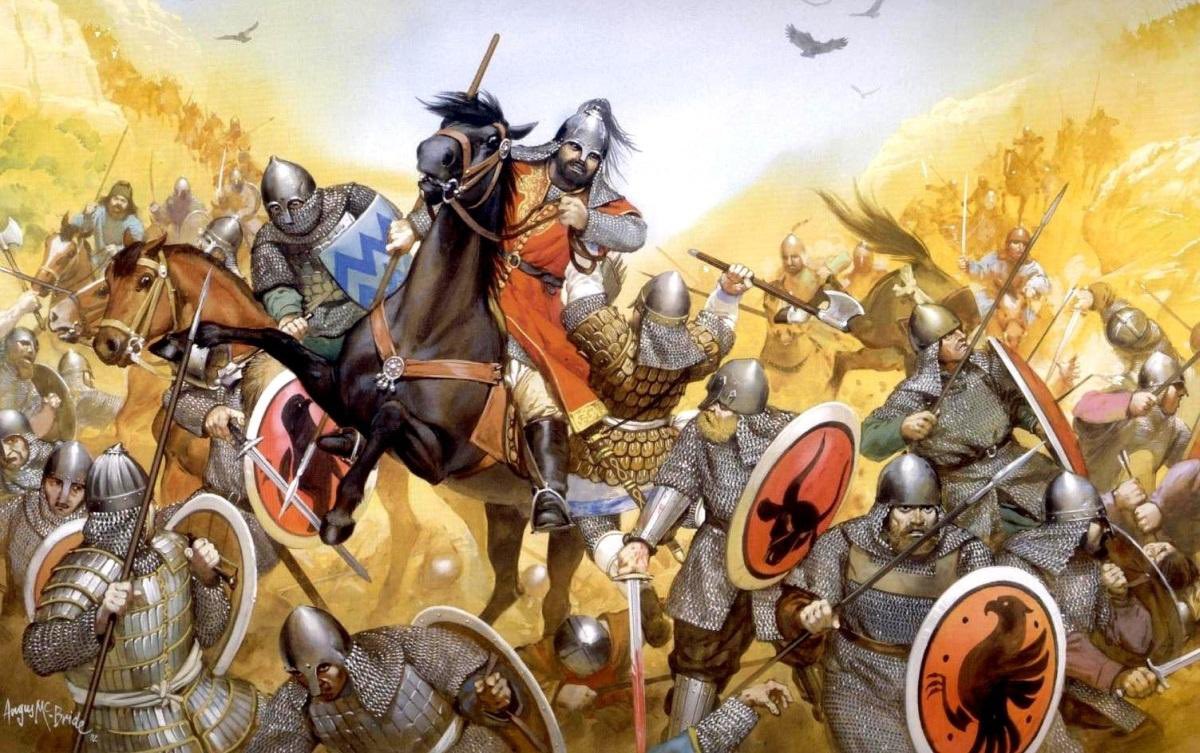
Through a decade of strife, rebellion, & collapse, the Varangians emerged with their reputation intact. The Guard’s robust justice system, elite military character, & deference to Byzantine leadership made them indispensable & they would remain so during the Komnenian Restoration 
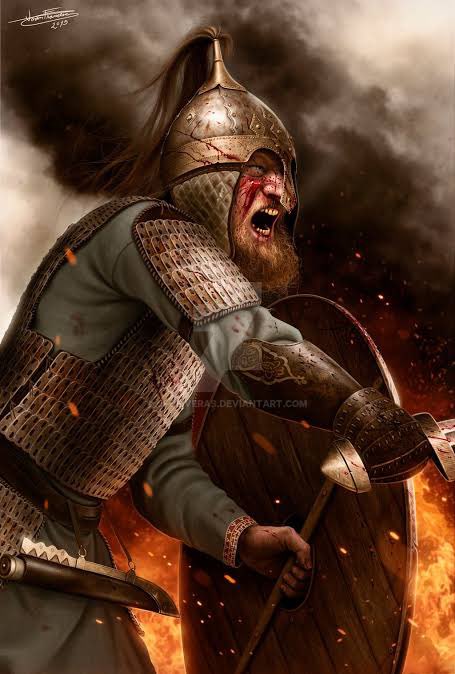
However, the constant warfare & diminished riches of the Byzantine Empire had thinned the ranks of the Varangians & made service less appealing for potential recruits. Luckily, events on the other end of Christendom would send thousands of warriors into Byzantium’s embrace. 

• • •
Missing some Tweet in this thread? You can try to
force a refresh



















